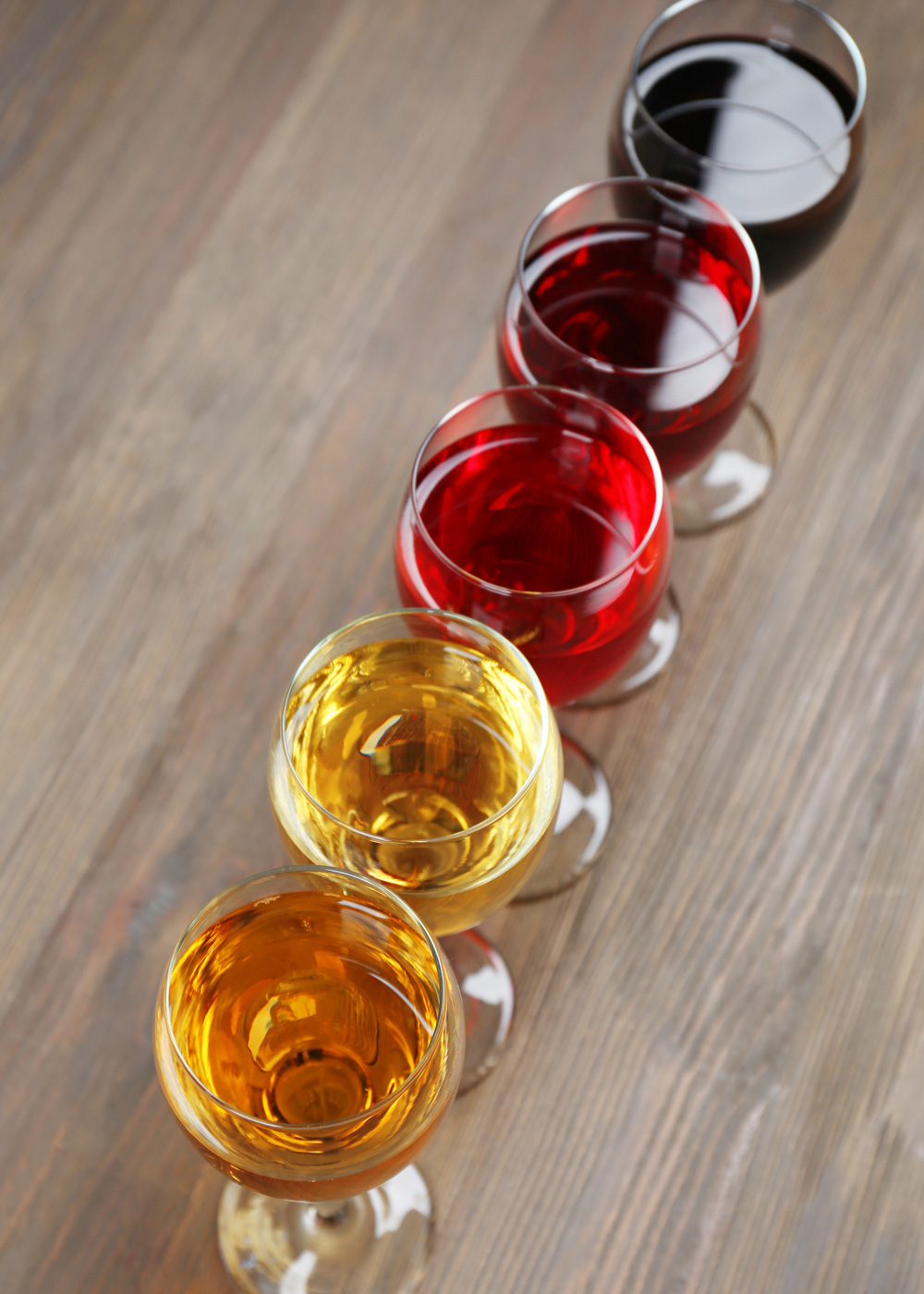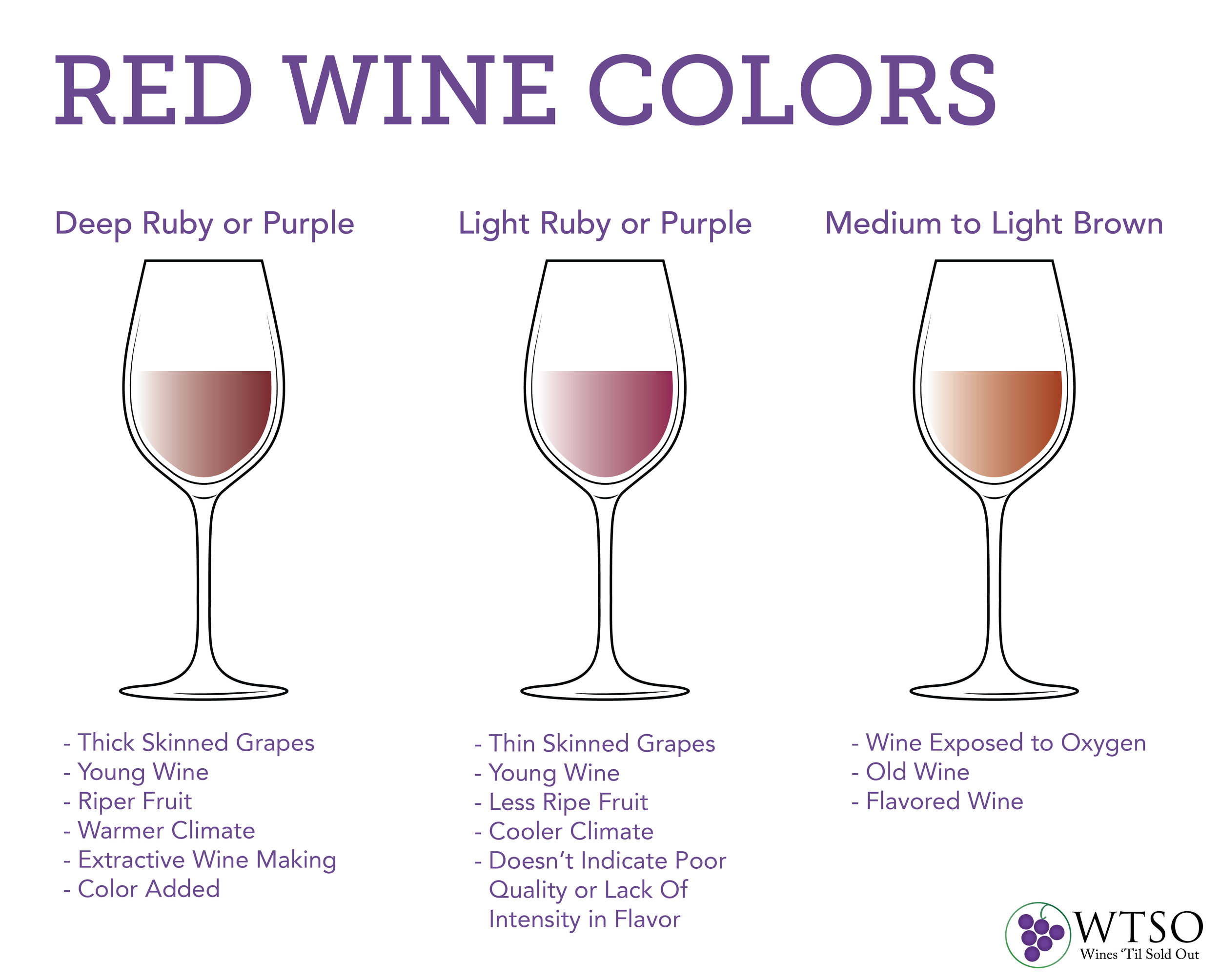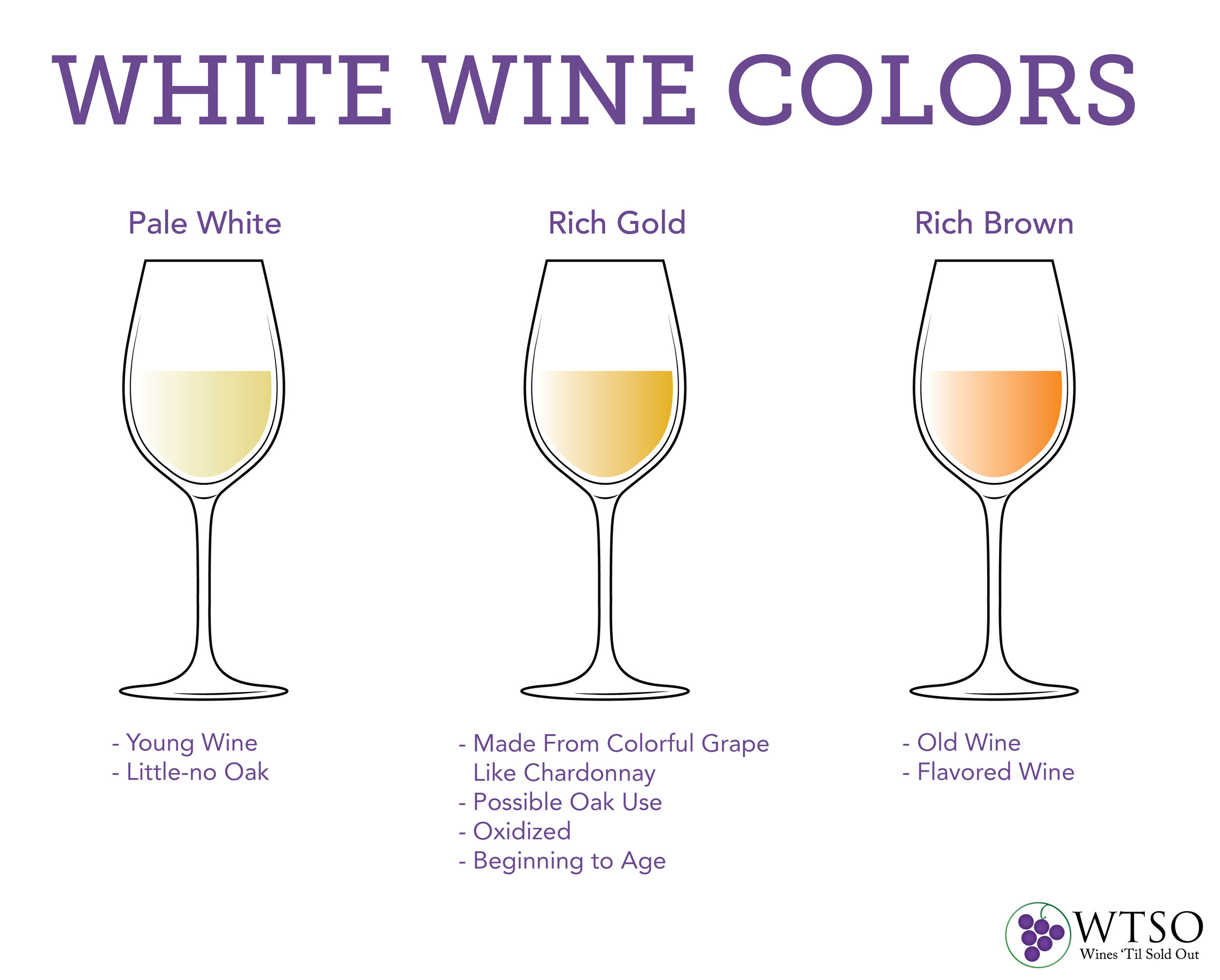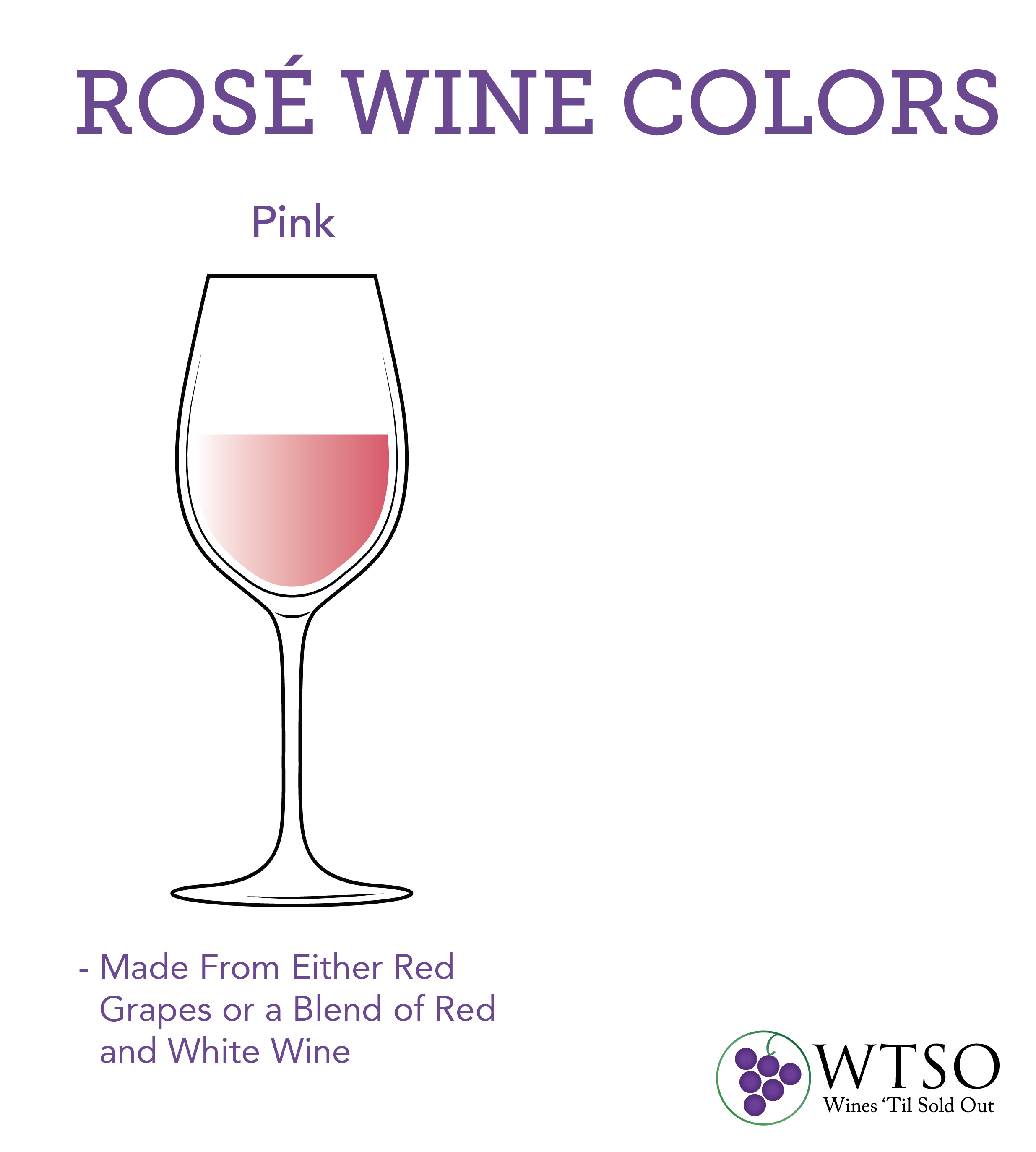Wines come in many different shades and intensities of color. Did you know that you might be able to learn something about a wine simply by looking at it? In this post, you’ll learn to draw meaning from the color of the wine you are drinking. We’ll start with some examples, and then describe the reason that wines have the color they do.
Now that you know what a particular color might mean in your glass, we can talk about the reason for some of those questions and conclusions.
Pigment Concentration
Pigment concentration refers to the intensity of color in your glass, rather than the color itself. Two wines can both be purple, for example, but one might be a much darker purple than the other. Pigment concentration is mainly related to the following factors:
- Grape Varieties and Skin Thickness: The most obvious factor contributing to concentration of pigmentation is the grape variety used to make the wine. Cabernet, for example, has naturally thicker skin than Pinot Noir. Since the pigments that turn the wine red are found in the skin, Cabernet is darker than Pinot. Looking at a deeply colored wine, it’s reasonable to assume that it might be made from a thick-skinned, dark, grape variety.
- Ripeness: As grapes ripen, their sugar increases, their apparent acidity decreases, and their color begins to darken. They start out green and begin to take on their final color partway through the growing season. The longer the ripening process goes on, the more pigment is concentrated in the skin leading to darker wine. While grapes can ripen in many environments around the world, warmer climates lead to earlier ripening, and allow for longer ripening periods.
Pigment Extraction
In order to produce a wine with a deep color, winemakers need to extract that color from the skin of the grapes and infuse it into the wine. There are several methods used to extract color:
- Maceration: soaking the skins in the grape juice before and/or during fermentation, and sometimes after fermentation as well. This is almost exclusively done for red wines. If extended maceration of the skins is applied to white grapes, the resulting wine is called “orange” wine, as it does, indeed, have an orange-y amber color. Orange wines are very rare, but interesting if you can find one. Most rosé wines are made by limiting the maceration of skins to produce just the pink color that the winemaker wants, before removing the skins from the vat.
- Pumping Over, Punching Down Etc: If the skins are in the fermentation vat, they tend to float to the surface and dry out, much like coffee grounds in water. In order to ensure that the skins are imparting flavor and color, winemakers mix the skins with the liquid. One way of doing this is to pump liquid from the bottom of the tank to the top, saturating the floating skins. Another method involves punching the skins down from the top to mix them into the liquid. The more aggressive the winery is with the mixing of skins with liquid during fermentation, the more deeply colored the wine will be.
It’s worth noting that some wines get a deep color from the addition of coloring agents that act like food coloring. The most common are oenocyanin and Mega Purple. Oenocyanin is made from the leftovers of a wine fermentation and consists mainly of pigmented tannins. Mega Purple is a trademarked grape juice concentrate used to add color and juice flavor to wine without tannin.
Color Development
As red wines age, they get lighter. As white wines age, they get darker. Ultimately, after many years of aging, white and red wines both end up medium amber in color. For exceedingly old wine, it can be hard to tell if it started out red or white.








